Research was conducted by DSc (habilitation) Agata Jędrzejuk from the Department of Ornamental Plants of the Warsaw University of Life Science in Warsaw, Poland, to study the effects of LED light on Petunia hybrid Dark Red.
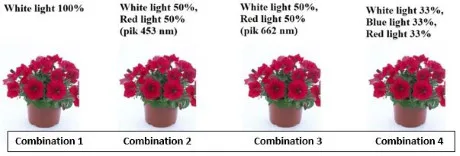
The test material were rooted cuttings of petunia (Petunia x atkinsiana) “Dark Red”, planted on 16th of April in pots P11 in standard peat substrate. The experiment was continued until 28th of June 2019. The plants, leveled in height and quality, were separated into 4 combinations and placed in a grow room in a constant temperature of 20°C. In each combination 15 plants were placed. The following parameters were measured in 6 periods (from 16th of April to 28th o June): height of plant, number and surface area of leaves, number and diameter of flowers, diameter of plants. The source of light consisted of LED lamps by Plantalux. The results were compiled statistically using one-way ANOVA1, and the means were compared using LSD test at P=0.95.
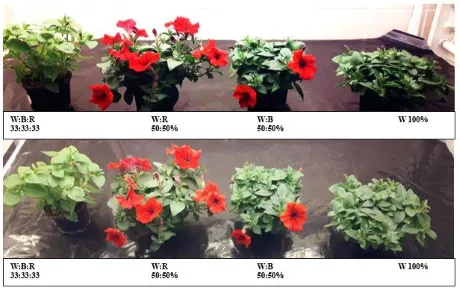
Results
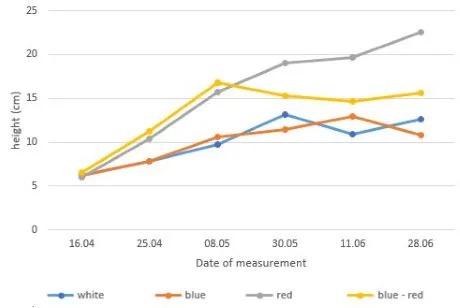
Growth dynamics
Plants growing in conditions of greater participation of red light (combination 3) were characterized by the highest growth rate. The shortest plants were from combination 1 and 2, which height was no greater than 13 cm during the last day of the experiment.
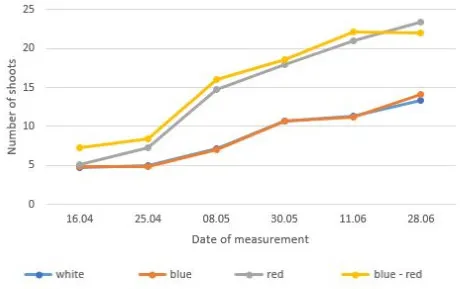
Number of shoots
The most shoots had the plants growing in conditions of greater participation of red light as well as a mix of blue and red lights (combination 3 and 4). The number of shoots from these combinations during the last day of experiment equaled on average 22 and 23,40.
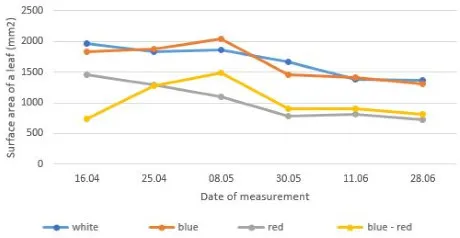
Surface area of a leaf
Plants growing in conditions of greater participation of white light and blue light had definitely bigger leaves than plants growing under red light and a mix of red and blue lights, on all dates of measurement. The leaves of petunia growing in conditions of greater participation of red light had the smallest leaves and their surface area has been decreasing with each passing date of measurement.
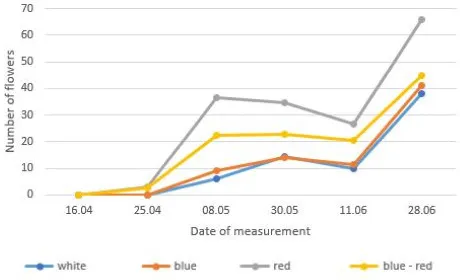
Number of flowers
The greatest number of flowers since the second date of measurement (25th of April) had the plants growing in conditions of greater participation of red light. On the last date of measurement (28th of June) the number of flowers from this combination equaled 65.8 per plant.
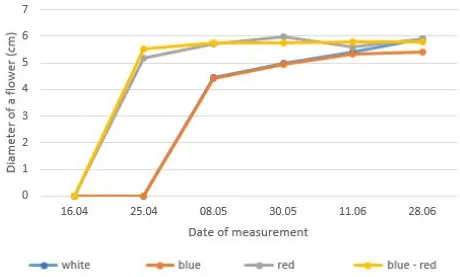
Diameter of a flower
From 25th of April to 11th of June plants growing in conditions of greater participation of red light as well as a mix of blue and red lights had on average bigger diameter of flowers that plants growing in conditions of greater participation of blue light.
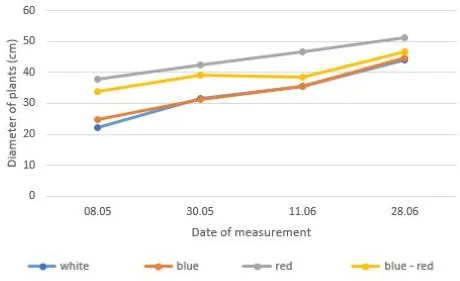
Diameter of plants
The measurements of the diameter of plants have been taken from 8th of May to 28th of June. Plants growing in conditions of greater participation of red light were characterized by the biggest diameter of plants on all dates of measurements. On the last day the diameter of above-mentioned plants reached on average 50 cm. The smallest diameter reached the plants from the control group (100% white light participation) – 43.9 cm.
For more information: Plantalux
Plantalux
plantalux.pl
